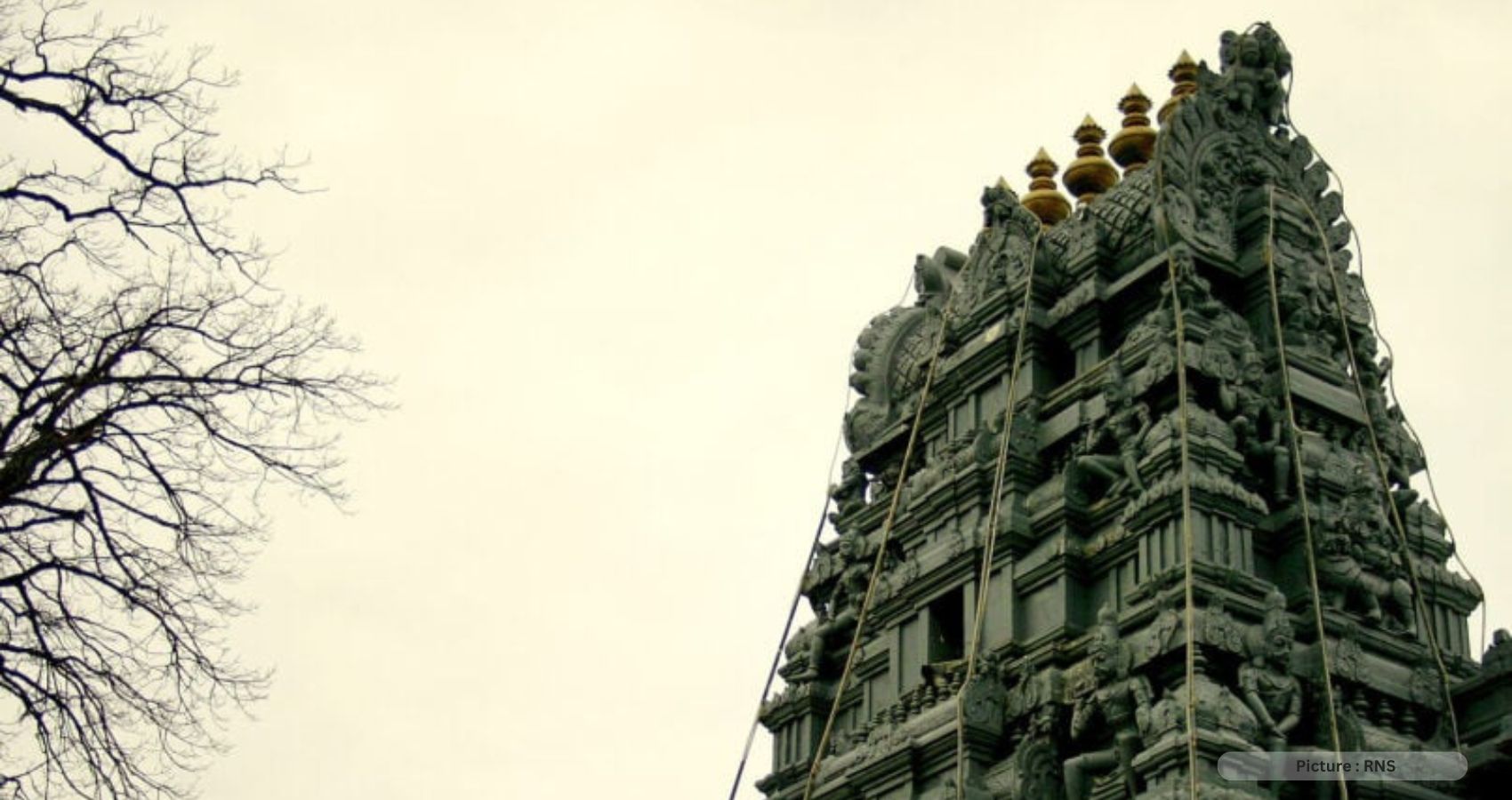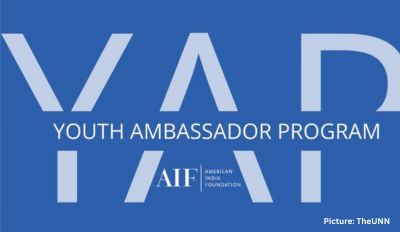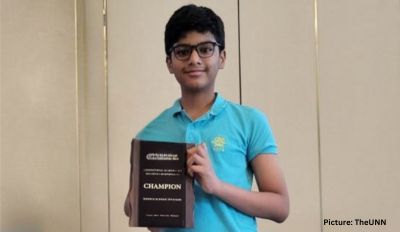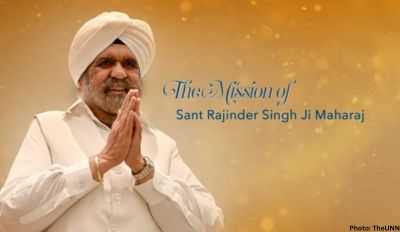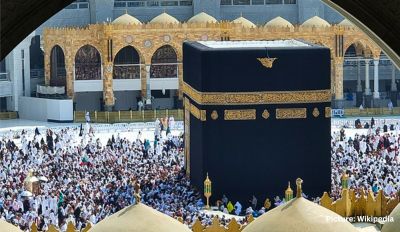“Temples are constructed with the youth in mind,” stated Uma Mysorekar, president of the Hindu Temple Society of North America (HTSNA), addressing a gathering of young Hindus at New York’s expansive Sri Maha Vallabha Ganapati Devasthanam temple, which spans an entire block in Queens borough.
A diverse assembly of college students and young professionals had congregated for Akshayam, an initiative supported by HTSNA aimed at keeping the teachings of the Hindu faith alive among the upcoming generation of Hindu leaders in the United States. Beyond this, through community engagement and educational collaborations, the organizers of Akshayam seek to regain control over a religion that is being tugged in multiple directions by India’s nationalist politics on one side and Western influence on the other.
Seated in the Parvati Hall of the temple, named in honor of Hinduism’s quintessential mother goddess, attendees immersed themselves in discussions revolving around the Ramayana, an epic narrative chronicling the incarnations of God and their interactions with humanity.
Vishwa Adluri, a philosophy professor at Hunter College in New York and one of the panelists for the day, emphasized, “To be Hindu is to read.” He noted that children of other faiths have long had access to Sunday school classes, Bible studies, and other avenues for engaging in profound theological conversations from a young age. According to him, it’s now time for young Hindus to integrate the study of their faith into their identities.
The young audience exhibited enthusiasm and curiosity as religious scholars expounded on the significance of the unwavering relationships between Ram, Lakshman, and Sita—the Lord, his brother, and his wife. They delved into Ram’s epic quest to rescue Sita from the clutches of Ravana, a half-man, half-demon figure, raising questions about passages that have often posed challenges. One pressing query was why Lord Rama banished his pregnant wife Sita to the forest, ultimately leading to her abduction by Ravana and her subsequent rescue.
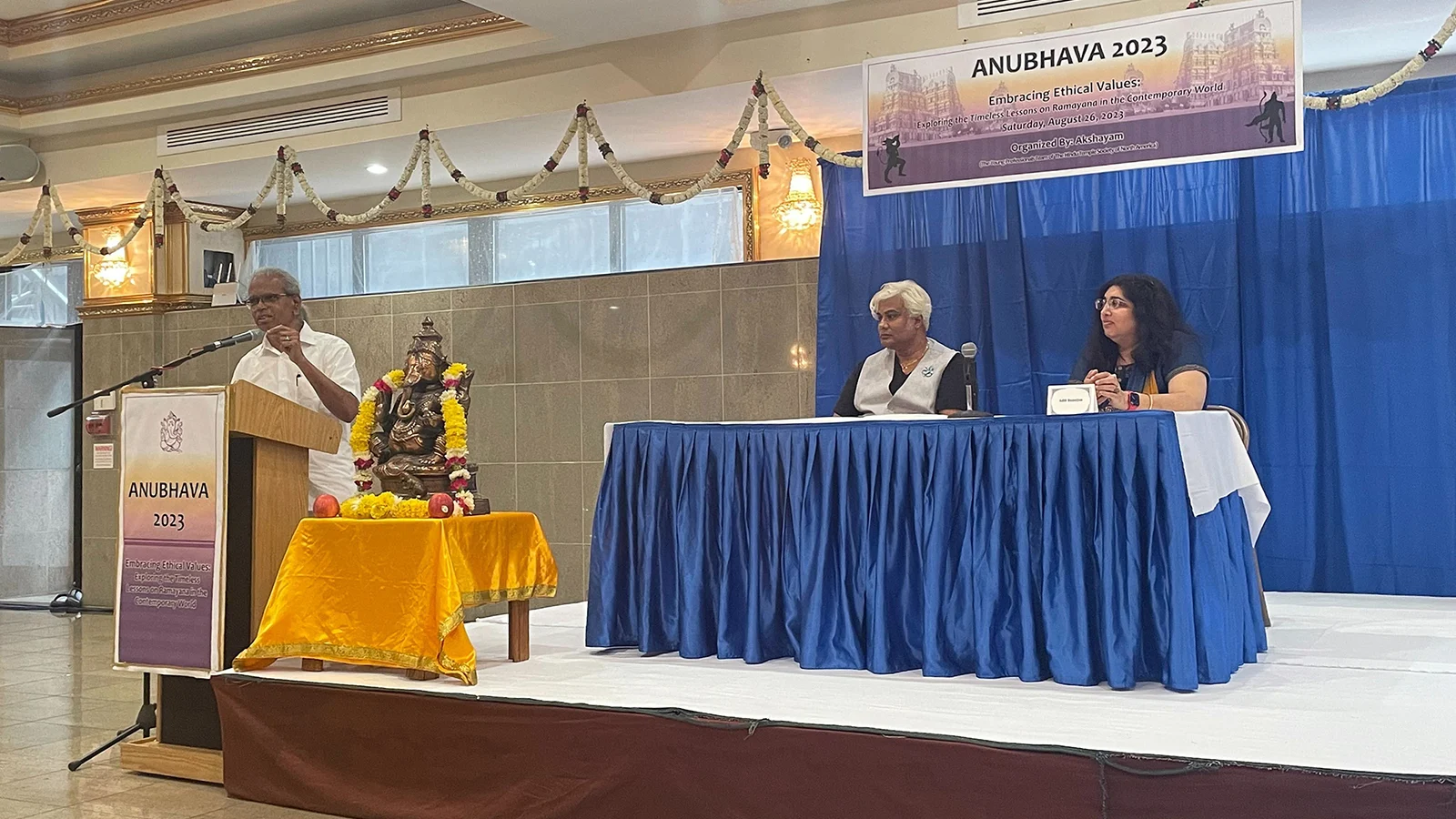
The responses provided frequently linked these ancient texts to contemporary moral dilemmas. Adluri drew a parallel to Ram’s kingdom, where villagers began to malign Sita’s chastity, which prompted her banishment. This decision was made to safeguard his own honor and the dignity of his kingdom. Adluri highlighted how this same impulse can be observed in today’s social media landscape, where gossip and slander about individuals can spread rapidly, often leading to the acceptance of misinformation.
Adluri aptly pointed out that this is how ordinary people can metamorphose into “asuras,” or demons, in the modern context.
In her address, Uma Mysorekar emphasized the importance of temples in the lives of young Hindus. She stated, “Temples are built for young people.” Her words resonated within the expansive Sri Maha Vallabha Ganapati Devasthanam temple in Queens, New York, where a diverse group of young Hindus had gathered.
This assembly of college students and young professionals had convened for Akshayam, an initiative sponsored by the Hindu Temple Society of North America (HTSNA). Akshayam aimed not only to keep the teachings of the Hindu faith alive but also to nurture the next generation of Hindu leaders in the United States. Recognizing the challenges posed by India’s nationalist politics and the influence of the Western world, the organizers of Akshayam sought to provide a firm foundation for the faith through community engagement and educational endeavors.
Seated within the Parvati Hall of the temple, named after the archetypal mother goddess in Hinduism, attendees immersed themselves in discussions centered around the Ramayana. This epic narrative recounts the incarnations of God and their interactions with humanity.
Vishwa Adluri, a philosophy professor at Hunter College in New York and one of the panelists for the day, emphasized the importance of reading in Hinduism. He noted that children of other faiths have long had access to structured religious education, such as Sunday school classes and Bible studies, allowing them to engage in deep theological discussions from a young age. Adluri asserted that it was now time for young Hindus to similarly incorporate the study of their faith into their identities.
The young audience displayed a keen interest in the discussions. As religious scholars expounded on the significance of the relationships between Ram, Lakshman, and Sita—representing the Lord, his brother, and his wife—questions arose about passages in the Ramayana that had long raised eyebrows. One such question pertained to Lord Rama’s decision to banish his pregnant wife Sita to the forest, ultimately leading to her abduction by Ravana and her subsequent rescue.
The answers provided by the panel often drew connections between these ancient texts and contemporary moral dilemmas. Adluri explained that in Ram’s kingdom, villagers had begun to question Sita’s chastity, leading to her banishment—a decision made to preserve both Ram’s honor and the dignity of his kingdom. Adluri astutely pointed out how this impulse manifests in today’s digital age, where gossip and slander about individuals can quickly proliferate, often resulting in the acceptance of false information.
Adluri aptly noted that this phenomenon is akin to how ordinary people can transform into “asuras,” or demons, in the context of modern society.
In conclusion, Uma Mysorekar’s assertion that “Temples are built for young people” resonated deeply within the grand Sri Maha Vallabha Ganapati Devasthanam temple in Queens, New York, where a diverse assembly of young Hindus had gathered.
These college students and young professionals had converged for Akshayam, an initiative sponsored by the Hindu Temple Society of North America (HTSNA) with the dual purpose of preserving the teachings of the Hindu faith and nurturing the future leaders of Hinduism in the United States. Acknowledging the complex challenges posed by India’s nationalist politics and the pervasive influence of Western culture, the organizers of Akshayam were committed to fortifying the faith through community engagement and educational collaborations.
Seated within the Parvati Hall of the temple, an homage to the quintessential mother goddess of Hinduism, attendees engaged in profound discussions centered around the Ramayana. This timeless epic recounted the divine incarnations and their interactions with humanity.
Vishwa Adluri, a philosophy professor at Hunter College in New York and one of the day’s panelists, underscored the significance of reading in the practice of Hinduism. He observed that children of other faiths had long benefited from structured religious education, including Sunday school classes and Bible studies, which facilitated their engagement in deep theological discussions from a young age. Adluri asserted that it was now imperative for young Hindus to integrate the study of their faith into their identities.
The young audience exhibited a palpable eagerness for these discussions. As religious scholars expounded on the profound relationships between Ram, Lakshman, and Sita—representing the Lord, his brother, and his wife—questions arose about passages in the Ramayana that had long posed ethical quandaries. One such question revolved around Lord Rama’s decision to exile his pregnant wife Sita to the forest, ultimately leading to her abduction by Ravana and her eventual rescue.
The panel’s responses often drew parallels between these ancient texts and contemporary moral dilemmas. Adluri elucidated that in Ram’s kingdom, villagers had begun to question Sita’s chastity, leading to her banishment—a decision driven by the necessity.

